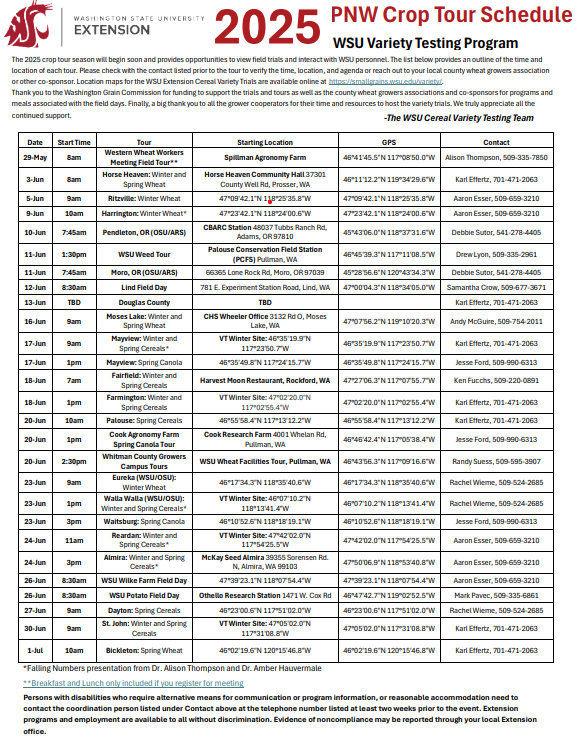Researchers dealt with lack of moisture, late cold snap, extreme heat
We are well into the 2025 winter wheat season, and the spring crop is in the ground. This year is shaping up with favorable growing conditions around most of the state, at least for now. As one of the Washington Grain Commissioners said during a recent meeting, “We only have five more months for the weather to kill the wheat.” A lot can happen to the crop during the 10-month growing season. This was evident in the results of the 2024 Washington State University (WSU) Extension winter wheat trials. Dry weather at planting in the fall of 2023 impacted emergence at Lind and Connell. Those trials were abandoned in the spring. A sudden cold snap in February 2024 severely damaged some varieties, especially at Harrington, Ritzville, and Walla Walla. We made it through a cold, wet spring with only moderate stripe rust. The crop was looking good until extreme heat in July terminated grain fill at Pullman and the Palouse; grain was shriveled, with low test weight and high protein at harvest.
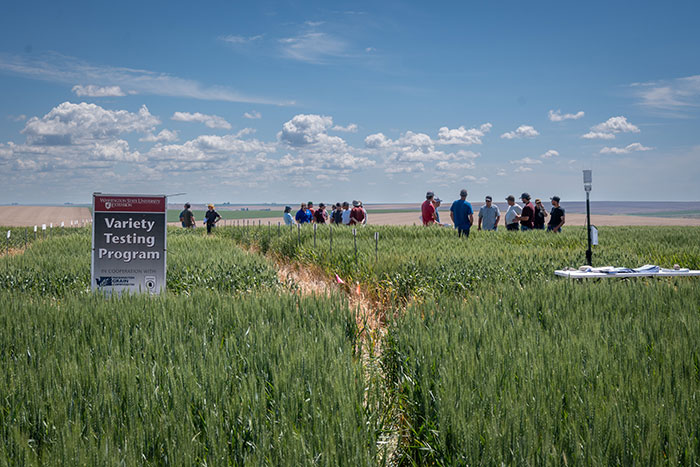
The total winter wheat trial effort is large, including 35 separate yield trials through Eastern and Central Washington. As in the past, the soft winter wheat varieties and experimental lines were divided into low and high rainfall zones. Entries were grown in their most representative zones. The CLOAX trial was made up of soft winter wheat carrying the Clearfield or CoAXium herbicide resistance. For consistent fertility management, the hard winter wheat trials contain hard red, hard white, and the herbicide-resistant hard wheats.
In the soft white winter wheat trials for the less-than 12-inch rainfall zone, LCS Shine, along with the older varieties, ARS Crescent, Norwest Duet, and Devote, had higher grain yields; several other varieties were ranked similarly above average. Protein concentrations were acceptably low, for soft white wheat, and test weights were high (see Table 1). Average grain yields were higher than normal in the 12-to-16-inch rainfall zone due to superior yields at Reardan and Creston (Table 2). A group of several varieties including LCS Jefe, LCS Hulk, WB1621, Norwest Duet, Norwest Tandem, LCS Kamiak, and AP Exceed ranked higher than others. Test weights were a bit low on average. Grain yields of LCS Shine and Castella were impacted by game feeding at Anatone and Creston.
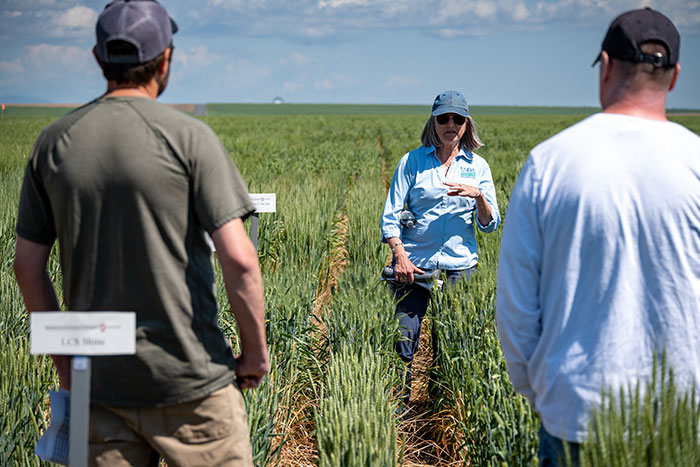
As we moved into the higher rainfall zones, the earlier maturing varieties, including Norwest Tandem and TMC M-Pire, had better performance for grain yield and test weight, although protein concentrations were creeping up. The warm July temperatures shortened the grain filling period (Table 3). The effects of the July heat were more evident in the greater-than-20-inch rainfall zone, where average grain yield was lower than observed in the 16-to-20-inch zone (Table 4). Test weights were low, and protein concentrations were high for the same reason. LCS Shine had the highest grain yields followed by Norwest Duet.
In the CLOAX trials, the herbicide-resistant soft winter wheat varieties with the Clearfield resistance trait had similar grain yields to each other, except for Mallory CL+, which was impacted by cold injury (Table 5). Top performers with the Clearfield trait were Sockeye CL+ and Piranha CL+ in the low rainfall zones, while VI Encore CL+ and Sockeye CL+ joined the group in the high rainfall zones. Top performers with the CoAXium resistance trait were LCS Kraken and Nova AX in the less-than-12-inch rainfall zone. Nova AX continued to perform well in the other rainfall zones, but most of the varieties carrying the CoAXium trait had lower grain yields than the Clearfield lines and the LCS Shine check. The CoAXium trait has been more challenging to move into soft white wheat because it was originally available as a hard red winter wheat. All these trials had similar trends for test weight and protein concentrations across rainfall zones as described above in the soft winter wheat trials.

The two best performing varieties in the less-than 12-inch hard winter wheat trials were Kivari AX and Whistler but they were not entered into other rainfall zones. LCS Jet out-performed all other hard winter wheats when averaged over all dry locations (Table 7). Grain yields at both the Douglas and Ritzville locations were significantly higher than normal. Although test weights were high, the protein concentrations were quite low, likely due to grain yields that were much higher than the fertility program applied to the plots. Walla Walla was the only location for hard wheat in the 16-to-20-inch rainfall zone. Grain yields averaged almost 140 bushels per acre, and both test weight and protein were high. This trial received adequate amounts of fertilizer for hard winter wheat. LCS Blackbird, Scorpio, LCS Missile, and LCS Jet were the top performers. In the greater-than-20-inch region, LCS Jet continued to exhibit why it occupies more hard winter wheat acreage than other hard wheats in Washington. This trial at Pullman had high protein but low test weights, likely due to the July heat as mentioned earlier. Data for the high rainfall zones is averaged in Table 8.
Full results from the 2025 winter trials are on the Small Grains website. The data is posted online in a different format this year due to Washington state accessibility requirements. Rather than individual PDF tables posted for each location, tables are now embedded within the website, and multiple locations are combined within precipitation zones. Single-year and two-year averages are provided for each table. Trial data is summarized by rainfall zones: less-than-12 inches, 12-to-16 inches, 16-to-20 inches, and greater-than-20 inches of annual rainfall.
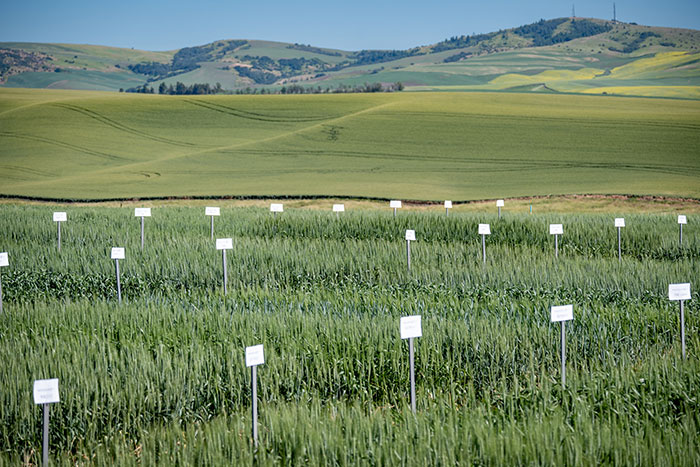
Of course, grain yield isn’t the only trait that is used for variety selection. We have been updating and upgrading the WSU Variety Selection tool for wheat and barley. Through links on the WSU Small Grains website, you will be able to search the trial data by location, by region, or by a custom set of locations. For each variety, data, including multiyear yields, test weight and protein, disease ratings, winter survival index, and end use quality, can be selected and used to determine the best varieties for your own production. The originator of the variety and seed availability will also be regularly updated. We are linking this selection tool to the variety testing database so that it will remain up to date. This site was our most visited before we had to update it due to changes in WSU information technology. Our goal is to keep it more accessible and useful than ever.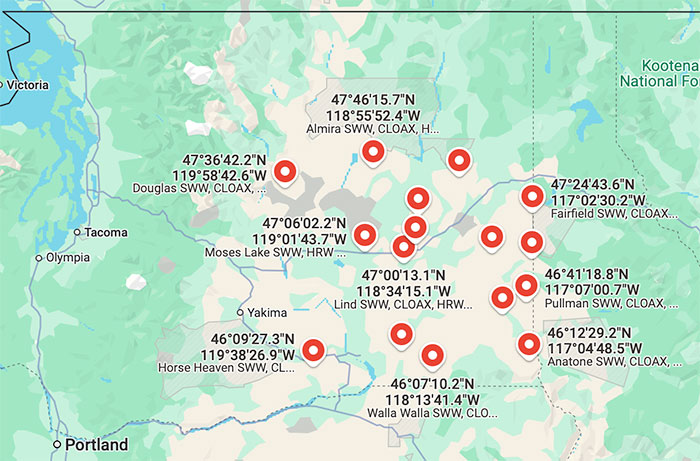
The 2025 winter wheat trials were planted in the fall of 2024. We have been out to visit all sites, and most look good or at least like the local fields. Locations are marked in the map above, and specific GPS coordinates are available on the Small Grains Variety Testing website.
Our dryland Extension team has worked with the technicians who are managing the variety testing program to put the finishing touches on our summer plot tour schedule. Plot tours are scheduled at 23 locations in June and early July. Events and field days in Oregon and Washington are also listed for ease in planning. Many of the plot tours will be led by the lead technician for variety testing, Dr. Karl Effertz. Contact him if you have questions about tours and plans for the fall. The tour schedule is also on the WSU Small Grains website where you can check for changes or updates. Let’s hope the next five months remain kind to the 2025 wheat crop, and we hope to see you in the field in 2025.
Acknowledgements: Funding for the WSU Extension Uniform Cereal Variety Testing Program is provided by the Washington Grain Commission. Variety trials are made possible by the contribution of land and time from farmer cooperators where the trials are located.
This article originally appeared in the May 2025 issue of Wheat Life Magazine.
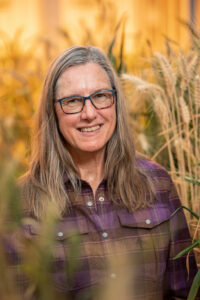
Kimberly Garland-Campbell
Research Geneticist and Club Wheat Breeder, USDA-ARS Washington State University

Karl Effertz
Lead Technician Washington State University's Variety Testing Program

